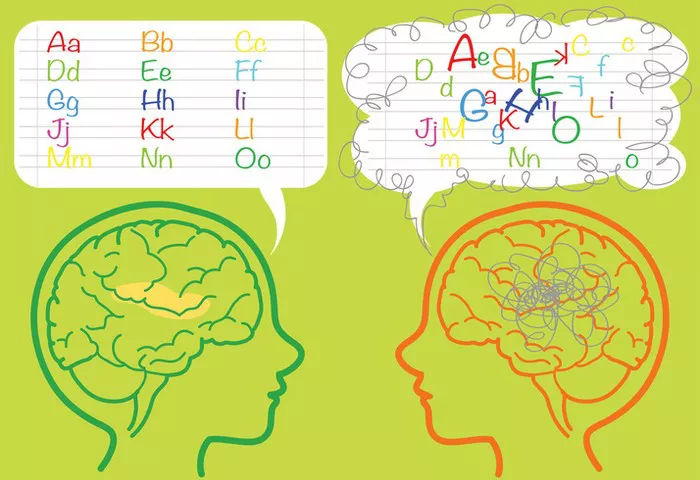Dyslexia, a learning disorder characterized by difficulties with reading, spelling, and writing, affects millions of individuals worldwide. Despite its prevalence, dyslexia remains widely misunderstood, often leading to misconceptions and stigmatization. While its manifestations are evident in academic settings, dyslexia is rooted in neurobiological differences that affect how the brain processes language. In this article, we delve into the intricate neural mechanisms underlying dyslexia, focusing on which part of the brain it affects and how these insights can inform interventions and support strategies.
Defining Dyslexia:
Dyslexia is a specific learning disability that primarily affects reading and related language-based processing skills. It is not attributable to factors such as low intelligence, inadequate instruction, or sensory deficits. Individuals with dyslexia may experience challenges with decoding words, recognizing sight words, and understanding the relationship between sounds and letters. These difficulties often persist despite adequate instruction and intelligence, impacting academic achievement and self-esteem.
Neurobiological Basis of Dyslexia:
Research in cognitive neuroscience has elucidated the neurobiological basis of dyslexia, highlighting differences in brain structure and function compared to typical readers. Neuroimaging studies, including functional magnetic resonance imaging (fMRI) and diffusion tensor imaging (DTI), have provided valuable insights into the neural underpinnings of dyslexia.
One of the key regions implicated in dyslexia is the left hemisphere of the brain, particularly areas associated with language processing. The most consistently reported finding is atypical activation or connectivity patterns in the regions involved in phonological processing, such as the left inferior parietal lobule (IPL), left superior temporal gyrus (STG), and left inferior frontal gyrus (IFG). These areas play crucial roles in decoding written words, mapping sounds to letters, and retrieving phonological information from memory.
Moreover, structural abnormalities have been observed in the brains of individuals with dyslexia, including differences in gray and white matter volume, as well as alterations in the integrity of white matter pathways connecting key language regions. For instance, reduced volume in the left planum temporale, a region important for processing auditory information and phonological awareness, has been consistently reported in individuals with dyslexia.
Genetic Factors and Dyslexia:
Genetic studies have also contributed to our understanding of dyslexia, highlighting the role of specific genes in predisposing individuals to the disorder. Several candidate genes involved in neuronal migration, synapse formation, and myelination have been implicated in dyslexia susceptibility. Notably, variants in genes such as DCDC2, KIAA0319, and DYX1C1 have been associated with an increased risk of dyslexia.
These genetic findings underscore the complex interplay between genetic predisposition and environmental factors in the development of dyslexia. While genetic factors contribute to susceptibility, environmental influences, such as early literacy experiences and educational interventions, can modulate the expression and severity of dyslexia symptoms.
Impact on Brain Connectivity:
In addition to localized differences in brain activation and structure, dyslexia is characterized by alterations in functional and structural connectivity networks. Functional connectivity refers to the temporal correlation of brain activity between different regions, while structural connectivity refers to the anatomical pathways connecting brain regions.
Studies using resting-state fMRI have revealed disrupted functional connectivity patterns in individuals with dyslexia, particularly within the default mode network (DMN) and the dorsal attention network (DAN). These networks are involved in various cognitive processes, including attention, memory, and self-referential thinking, all of which are relevant to reading and language tasks.
Furthermore, diffusion MRI studies have shown alterations in the structural connectivity of white matter pathways, such as the arcuate fasciculus (AF) and the superior longitudinal fasciculus (SLF), which are crucial for language processing and reading comprehension. Reduced white matter integrity in these pathways has been associated with deficits in phonological processing and rapid automatized naming (RAN), two hallmark characteristics of dyslexia.
Developmental Trajectories and Compensatory Mechanisms:
Understanding the developmental trajectories of dyslexia is essential for early identification and intervention. Longitudinal studies have shown that dyslexia is evident in early childhood, often before formal reading instruction begins. Early signs may include difficulties with rhyming, phonemic awareness, and rapid naming tasks, which are reliable predictors of later reading difficulties.
As children with dyslexia grow older, they may develop compensatory strategies to mitigate their reading challenges. These strategies often involve relying on visual or contextual cues, rather than phonological decoding, to derive meaning from text. While these compensatory mechanisms may enable individuals with dyslexia to cope with reading tasks to some extent, they may also mask underlying difficulties and hinder progress in developing proficient reading skills.
Implications for Intervention and Support:
The neurobiological insights gained from research on dyslexia have important implications for intervention and support strategies. Early identification and targeted interventions are crucial for addressing the needs of individuals with dyslexia and promoting their academic success.
Multisensory structured literacy approaches, such as Orton-Gillingham and Wilson Reading System, have been shown to be effective in teaching reading skills to individuals with dyslexia. These approaches emphasize systematic instruction in phonemic awareness, phonics, fluency, vocabulary, and comprehension, providing explicit and structured support for struggling readers.
Furthermore, assistive technologies, such as text-to-speech software and speech-to-text applications, can help individuals with dyslexia access written materials more easily and independently. Providing accommodations, such as extended time on exams, preferential seating, and access to audiobooks, can also level the playing field for students with dyslexia in educational settings.
Conclusion:
Dyslexia is a complex neurodevelopmental disorder with profound implications for individuals’ academic and psychosocial well-being. By elucidating the neurobiological basis of dyslexia, research has shed light on the underlying mechanisms that contribute to reading difficulties. Understanding which part of the brain dyslexia affects, including differences in activation, structure, and connectivity, is essential for developing targeted interventions and support strategies.
Moving forward, interdisciplinary collaboration between researchers, educators, clinicians, and policymakers is needed to translate scientific findings into evidence-based practices and policies that support individuals with dyslexia. By harnessing the power of neuroscience and education, we can empower individuals with dyslexia to reach their full potential and thrive in school and beyond.


